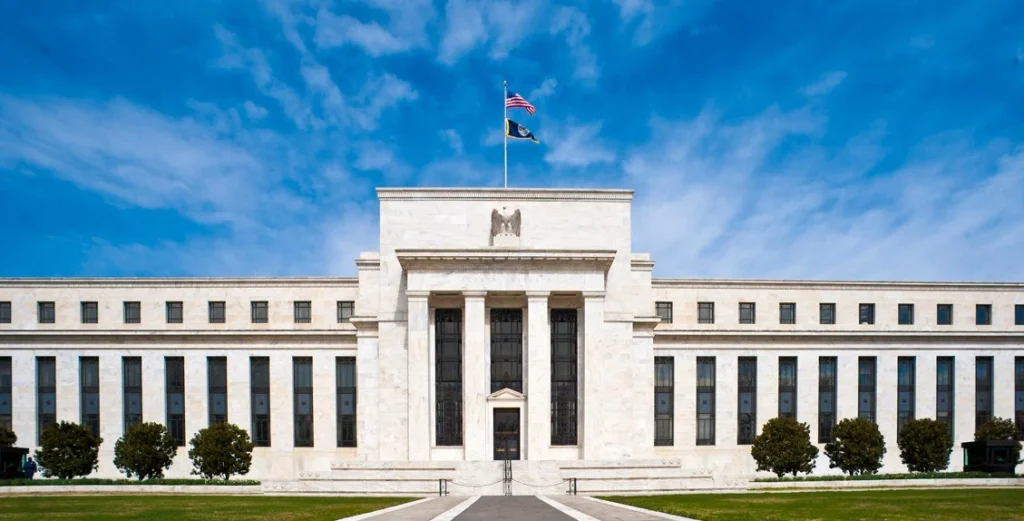The dynamic global economic landscape has been a subject of concern for policymakers worldwide, as they strive to adapt to rapid changes and uncertainties. The Federal Reserve and the Bank of Canada, two leading central banks, have been at the forefront of crafting strategies to navigate these complexities.
Their responses have significant implications not only for the North American economy but also for global financial stability. Understanding their approaches provides insights into the evolving economic environment and potential paths for future monetary policies.
Federal Reserve’s approach to economic challenges

The Federal Reserve, often referred to as the Fed, plays a crucial role in shaping the economic trajectory of the United States. Its policies have a profound impact on the employment rate, inflation levels, and overall economic growth. In response to the current economic challenges, the Fed has adopted a multifaceted approach, focusing on accommodating economic recovery while monitoring inflation pressures.
The economic focus has led the Fed to maintain a low interest rate environment to encourage borrowing and investment. This policy is designed to promote economic activity by making it cheaper for businesses and consumers to access credit, thereby stimulating spending and investment. However, the Fed is also vigilant of inflationary pressures that can result from prolonged low interest rates.
Monitoring inflationary trends
Inflation has emerged as a significant concern for the Fed amid ongoing economic recovery efforts. A sustained rise in consumer prices can erode purchasing power and destabilize the economy. To address this, the Fed has instituted a flexible average inflation targeting framework. This policy shift allows inflation to exceed the traditional 2% target temporarily, with the goal of achieving moderate inflation over the long term.
This strategy grants the Federal Reserve greater flexibility in its response to economic fluctuations, ensuring that temporary price increases do not necessitate abrupt policy reversals. Balancing economic growth with inflation control remains a priority for the Fed as it navigates the current global economic backdrop.
Employment and labor market focus
The labor market is another critical area of focus for the Federal Reserve. Promoting maximum employment is one of its dual mandates, essential for sustaining economic prosperity. To achieve this, the Fed is attentive to labor market conditions, monitoring indicators such as job creation, labor force participation, and wage growth.
Recent measures have sought to support job creation by maintaining an accommodating monetary stance, which includes low borrowing costs for businesses. This approach helps stimulate hiring and investment, providing opportunities for individuals to re-enter the workforce and reducing unemployment rates.
Bank of Canada’s monetary policy strategies
The Bank of Canada, as the central bank of Canada, plays an instrumental role in shaping the nation’s economic outlook. In response to the global economic challenges, it has implemented strategies to support recovery, manage inflation, and enhance financial resilience. These strategies have positioned Canada to adapt effectively to the evolving global economic landscape.
One of the key tools employed by the Bank of Canada is the adjustment of its key policy interest rate. Like the Federal Reserve, the Bank of Canada has adopted a low interest rate policy to stimulate economic activity. This approach encourages borrowing and investment, essential components for driving growth and job creation.
Inflation targeting and consumer price stability
Inflation targeting is a central pillar of the Bank of Canada’s monetary policy. By maintaining a target inflation rate of 2%, within a flexible 1-3% range, the Bank seeks to ensure price stability and economic predictability. This approach enables businesses and consumers to make informed decisions, contributing to a stable economic environment.
In the face of recent inflationary pressures, the Bank of Canada has communicated its commitment to returning inflation to its target range. This involves calibrating monetary policy tools to address short-term inflation spikes while maintaining long-term price stability, an essential component of economic health.
Fiscal policy coordination and communication
The Bank of Canada’s strategies extend beyond monetary policy, involving close coordination with fiscal policymakers to ensure a coherent economic approach. By aligning monetary and fiscal policies, Canada enhances its ability to address economic challenges and support recovery efforts.
This coordination is crucial for implementing measures that provide direct support to individuals and businesses affected by economic disruptions. By working together, monetary and fiscal authorities can address economic needs more effectively, stimulating economic activity and fostering recovery.
Additionally, clear communication remains a cornerstone of the Bank of Canada’s approach. By providing transparent guidance on policy actions and economic assessments, the Bank enhances market stability and confidence. Effective communication ensures that stakeholders are informed, reducing uncertainty and fostering trust in the economy.
